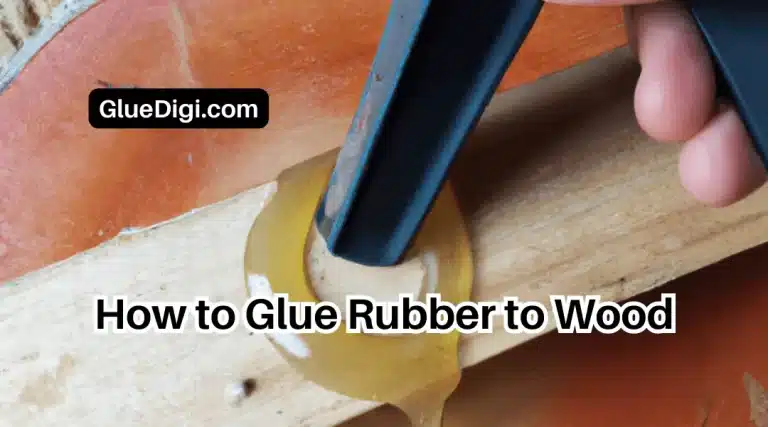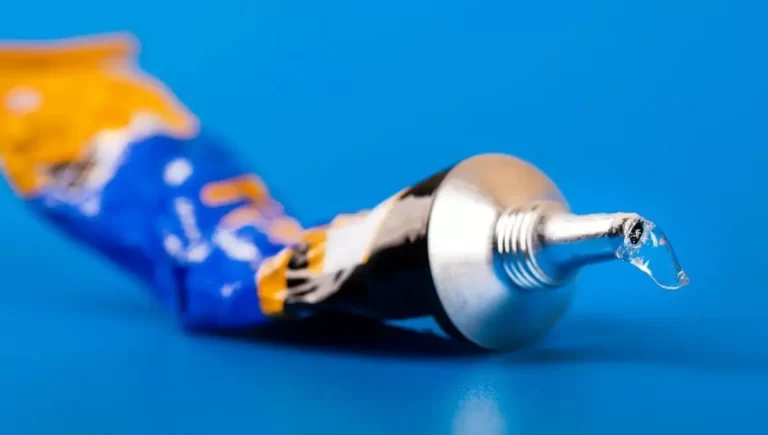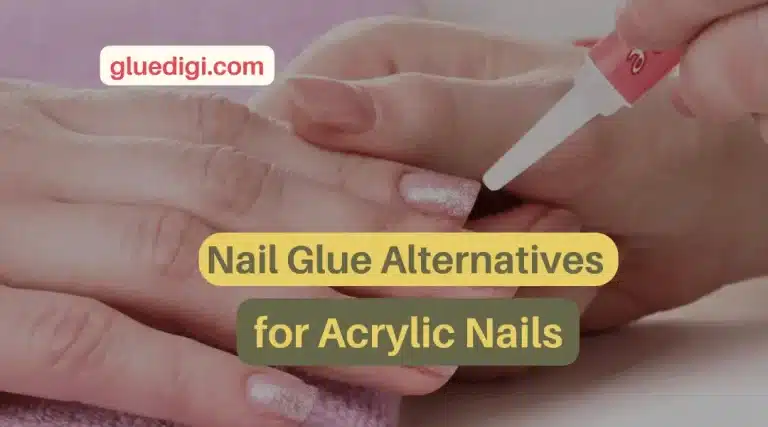When it comes to choosing the right adhesive for a particular application, one of the most important factors is its ability to resist water. From repairing outdoor furniture to fixing bathroom tiles, a waterproof glue can make all the difference in ensuring a long-lasting and secure bond.
Among the many options available on the market, Gorilla Glue has become a popular choice for its strength and versatility. However, not all Gorilla Glue products are created equal when it comes to waterproofing properties.
In this article, we will delve into the different types of Gorilla Glue available and explore their respective strengths and weaknesses in terms of water resistance. We will also discuss what ‘waterproof’ means in relation to adhesives and how it is measured, as well as provide tips on how to use waterproof Gorilla Glue effectively for various applications.
Whether you are a DIY enthusiast or a professional contractor looking for reliable bonding solutions, understanding which Gorilla Glue products are waterproof can help you achieve optimal results while ensuring safety and durability.
Key Takeaways
- Gorilla Glue offers a range of waterproof products like Gorilla Clear Grip, Super Glue Gel, and Epoxy, specifically designed for use in wet environments like swimming pools, aquariums, and marine applications.
- Not all formulas of Gorilla Glue may perform equally in terms of water resistance, and factors like bonding strength and durability over time should be considered when evaluating results.
- Surface preparation and following manufacturer’s instructions are essential when working with waterproof Gorilla Glue, and bonding non-porous surfaces like metal or plastic requires lightly sanding the area.
- Using Gorilla Glue waterproofing applications can ensure that projects remain safe from damage caused by water exposure, and selecting the right product based on its adhesive properties and ability to withstand environmental factors like temperature and moisture will ensure successful DIY projects without worrying about water damage.
Understanding the Different Types of Gorilla Glue
An examination of the various types of Gorilla Glue reveals that each product possesses specific characteristics and uses, which should be understood prior to determining the most suitable option for a waterproof project.
Application techniques play a significant role in ensuring the desired outcome, as certain adhesives are better suited for specific materials or surfaces. Comparing adhesives requires careful consideration of their properties, including strength, drying time, and water resistance.
While all Gorilla Glue products claim to be water-resistant, it is important to understand what ‘waterproof’ means in this context before making a decision. Waterproofing refers to an adhesive’s ability to resist water penetration over time and under various conditions such as temperature changes or exposure to different environments.
Therefore, understanding the different types of Gorilla Glue and their properties is essential when selecting the right adhesive for your waterproof project.
What Does "Waterproof" Mean?
The ability for a substance to resist or repel water can have significant implications for its practical applications. Waterproof materials offer numerous benefits, including protection from the damaging effects of moisture and the ability to maintain structural integrity in wet environments.
Common uses for waterproofing include outdoor gear such as tents and jackets, electronics, construction materials, and even cosmetics. Gorilla glue products that are labeled as waterproof undergo testing to ensure that they meet certain standards for resistance to water damage.
Understanding what ‘waterproof’ means is important when evaluating which gorilla glue product to use for specific applications. With this knowledge in mind, we can now move on to testing the gorilla glue products to determine their effectiveness in various situations.
Testing the Gorilla Glue Products
In order to evaluate the waterproof claims of Gorilla Glue products, a simple water test can be conducted.
This involves submerging the glued object in water for a specified amount of time and observing any changes.
The results of this test allow for an objective assessment of the level of waterproofing provided by each product.
Conducting a Simple Water Test
To determine the water resistance of a particular type of Gorilla Glue, a simple water test can be conducted. This is an important consideration for those who use waterproof adhesive in DIY projects that will be exposed to moisture or water.
To conduct the test, apply a small amount of the glue onto a non-porous surface and allow it to dry completely. Once dry, submerge the glued area in water for at least an hour. After this time has elapsed, remove the item from the water and assess whether or not any damage or weakening of the bond has occurred.
It is important to note that while some types of Gorilla Glue are marketed as waterproof, not all formulas may perform equally in this regard. In evaluating the results of your water test, consider factors such as bonding strength and durability over time when exposed to moisture or submerged in water.
Evaluating the Results
Evaluating the results of this water test is crucial for determining the effectiveness of a particular adhesive in protecting DIY projects from moisture or water damage. Comparing the adhesion and durability of waterproof gorilla glue can help determine which product to use for specific needs. A study conducted by Gorilla Glue Company found that their Original Gorilla Glue had 85% bond strength after being submerged in water for 1 hour, while their Clear Gorilla Glue had only 60% bond strength under similar conditions. It is important to note that temperature can also have an impact on the effectiveness of waterproof gorilla glue, with lower temperatures decreasing its performance. Overall, selecting the right product based on its adhesive properties and ability to withstand environmental factors such as temperature and moisture will ensure successful DIY projects without worrying about water damage. The subsequent section will focus on which specific gorilla glue products are waterproof.
Which Gorilla Glue Products are Waterproof?
Gorilla Glue offers a range of waterproof products that cater to various surfaces, ensuring durability and strength in any water-based application. Some of their popular waterproof products include Gorilla Clear Grip, Gorilla Super Glue Gel, and Gorilla Epoxy.
These products have been specifically designed for use in wet environments such as swimming pools, aquariums, and marine applications. Using Gorilla glue waterproofing applications can ensure that your projects remain safe from damage caused by water exposure.
While there are alternatives to waterproof Gorilla glue such as silicone sealants or epoxy resins, the benefits of using Gorilla glue lie in its superior bonding strength and versatility across different surfaces. For those who want to ensure maximum safety in their projects involving water exposure, using Gorilla Glue’s waterproof products is a reliable choice.
In the next section about tips for using waterproof gorilla glue, we will delve into some important considerations when working with these adhesives.
Tips for Using Waterproof Gorilla Glue
Applying waterproof adhesive can be a tricky process, so it is essential to follow certain tips for using the product effectively and achieving optimal results. Two critical factors to consider when working with waterproof Gorilla Glue are application techniques and surface preparation. The glue should be applied sparingly, as too much can cause an excessive amount of foaming that may result in poor adhesion. It is also essential to ensure that surfaces are clean and dry before applying the glue; otherwise, it will not adhere properly. Additionally, if bonding non-porous surfaces such as metal or plastic, it is recommended to lightly sand the area before applying the glue. By following these tips, users can achieve maximum effectiveness when using waterproof Gorilla Glue and ensure long-lasting bonds on various materials.
| Application Techniques | Surface Preparation |
|---|---|
| Apply sparingly | Ensure surfaces are clean and dry |
| Too much causes excessive foaming | Sand non-porous surfaces lightly |
| Follow manufacturer’s instructions | Avoid oils or other contaminants |
Conclusion
In conclusion, understanding the different types of Gorilla Glue and what ‘waterproof’ means is crucial in selecting the right product for your project. Testing has shown that some Gorilla Glue products are indeed waterproof, while others may only be water-resistant. It is important to carefully read the label and instructions before using any Gorilla Glue product.
If you require a waterproof adhesive, it is recommended to use either Gorilla Super Glue or Gorilla Epoxy. These products have been tested and proven to provide a strong bond even when exposed to water. However, it is important to note that proper application techniques must be followed for optimal results.
When using waterproof Gorilla Glue products, it is essential to ensure that surfaces are clean and dry before applying the adhesive. Additionally, clamping or holding the materials together until the glue dries completely will help ensure a strong bond.
By following these tips and selecting the appropriate product for your needs, you can achieve reliable and long-lasting results with Gorilla Glue’s waterproof options.



